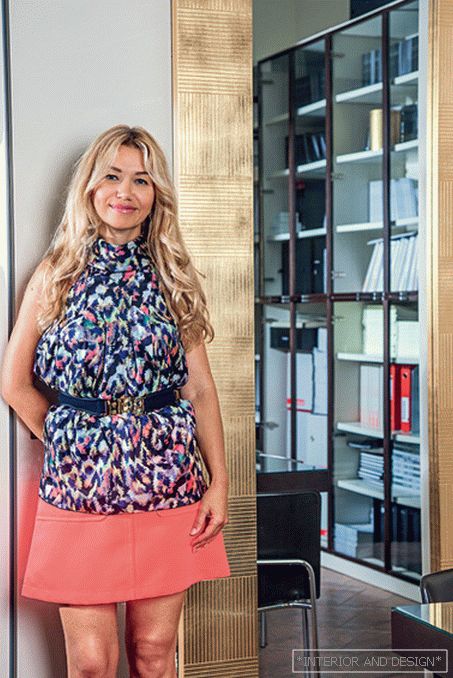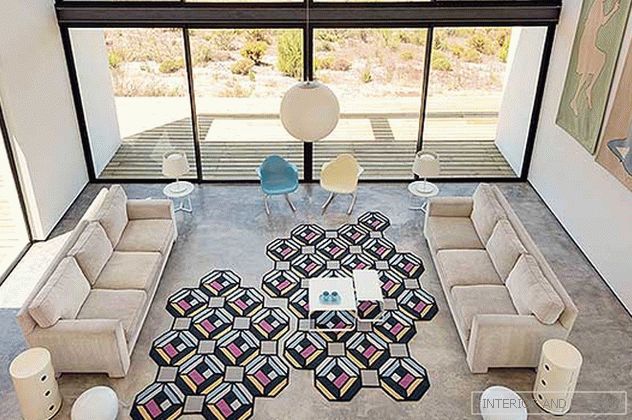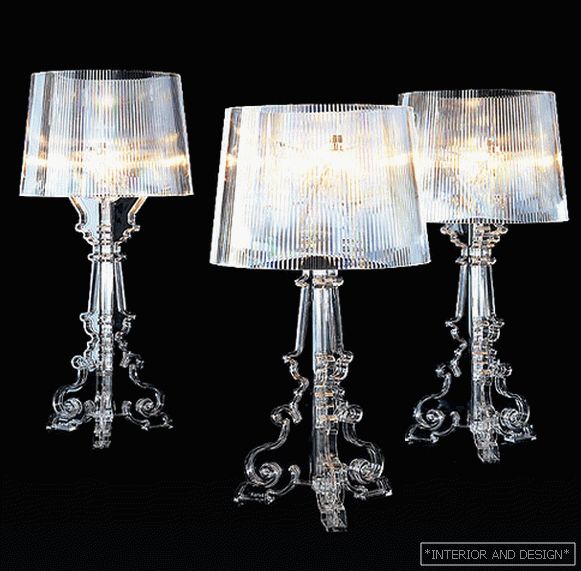In Montignac, in the south-west of France, the Lascaux IV International Rock Art Center was opened, designed by the Norwegian bureau Snøhetta.
By topic: Museums 2016: the pride of presidents and architects
Lasko Cave is called the Sistine Chapel of Rock Art. Such a quantity, quality and preservation of images of the Paleolithic era is nowhere else in the world. The place was discovered by teenagers in 1940, a museum soon opened here. But the flow of tourists had a bad effect on the microclimate of the cave, the painting began to collapse and in 1963 the museum was closed for visits. In order not to upset tourists, they built a copy, “Lasko II”, in which they recreated original drawings. In 2010, on the 70th anniversary of the discovery of the Lascaux cave, the creation of the Lascaux IV center was announced.
 Sloping concrete walls create the feeling of interlocking cave arches.
Sloping concrete walls create the feeling of interlocking cave arches. The building was built on the border of two types of landscape - between the overgrown hills and the Weser Valley. The museum is designed as an organic continuation of the hilly relief. All structural elements - walls, roof, facades - are made of concrete. It helps to perceive the building as a single object, merging with the landscape and reminiscent of minerals, stones and caves.
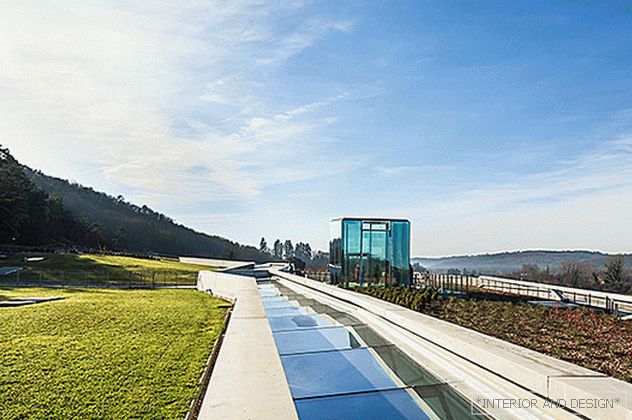 From the hall a visitor takes the elevator to the roof of the building.
From the hall a visitor takes the elevator to the roof of the building. The route inside the building is carefully thought out. From the entrance area, visitors take the elevator to the roof, offering panoramic views of the Weser Valley. Then go down the gentle slope of the roof to a copy of the famous cave. The winding path and gradual descent symbolize a journey through time and space in which a person can experience sensations similar to the experience of the cave pioneers in 1940.
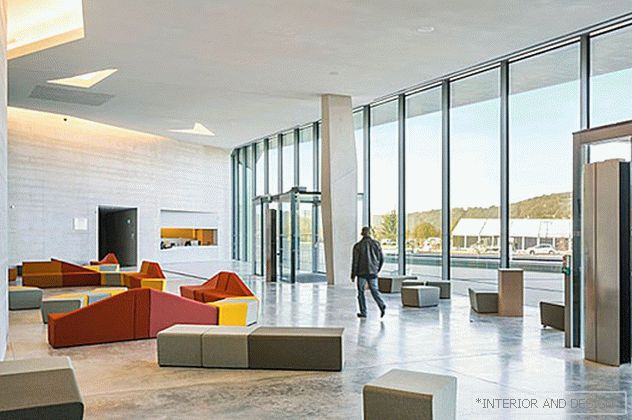 Strips of solid glazing on the facades provide access to sunlight.
Strips of solid glazing on the facades provide access to sunlight. The replica of the cave was created using the most advanced laser scanning and casting technologies, so that the shape of the vaults is reproduced to the nearest millimeter. 25 artists for two years manually painted 900 square meters. meters of the surface of an artificial cave, using the same pigments as the artists 20,000 years ago.
 The Snohetta building is an impressive modern addition to the Weser Valley landscape.
The Snohetta building is an impressive modern addition to the Weser Valley landscape. 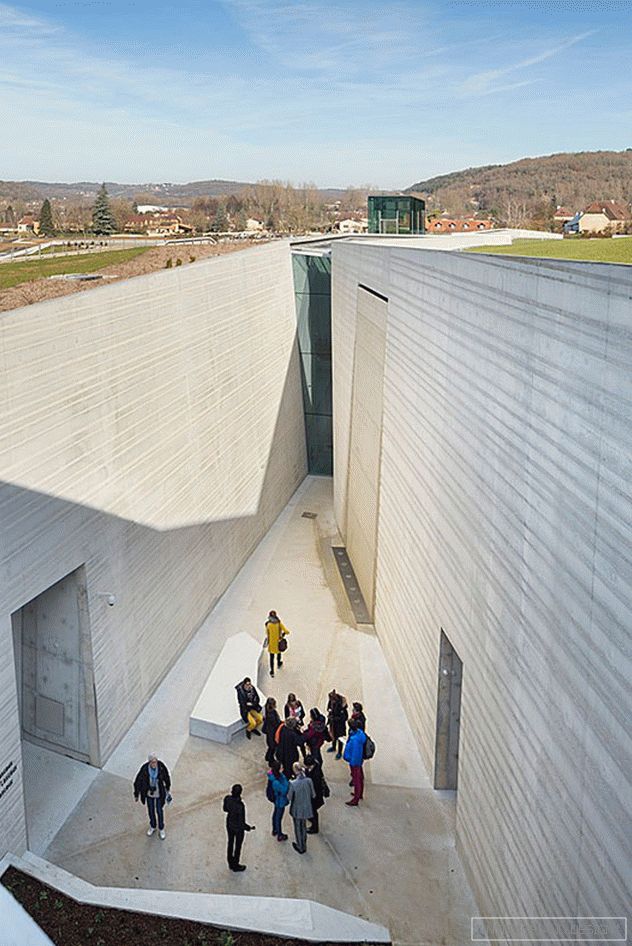 A building resembling a “crack” in the landscape follows the curve of a hill.
A building resembling a “crack” in the landscape follows the curve of a hill.  Pale gray walls are cast from concrete, horizontal stripes imitate the geology of limestone.
Pale gray walls are cast from concrete, horizontal stripes imitate the geology of limestone. Coming out of the cave, visitors enter the courtyard - "The Garden of the Caves". This space, surrounded by concrete walls and open to the sky, helps to escape and relax before continuing the route. Next are the halls devoted to the history of rock art, equipped with interactive panels and multimedia guide.
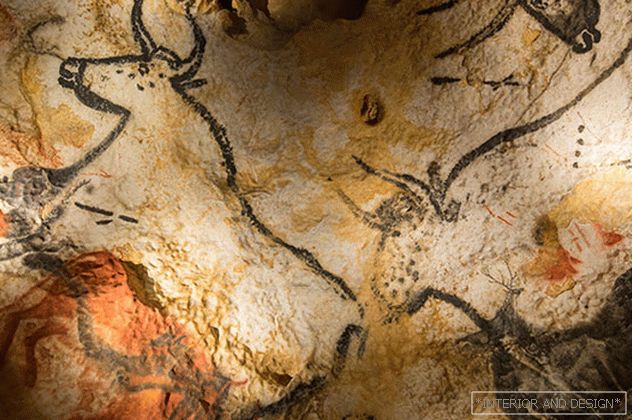 The artists used the same pigments as the authors of the painting, created 20 thousand years ago.
The artists used the same pigments as the authors of the painting, created 20 thousand years ago.  The center Lascaux IV gives the opportunity to get acquainted with the monument of rock painting of the Paleolithic era.
The center Lascaux IV gives the opportunity to get acquainted with the monument of rock painting of the Paleolithic era. 
